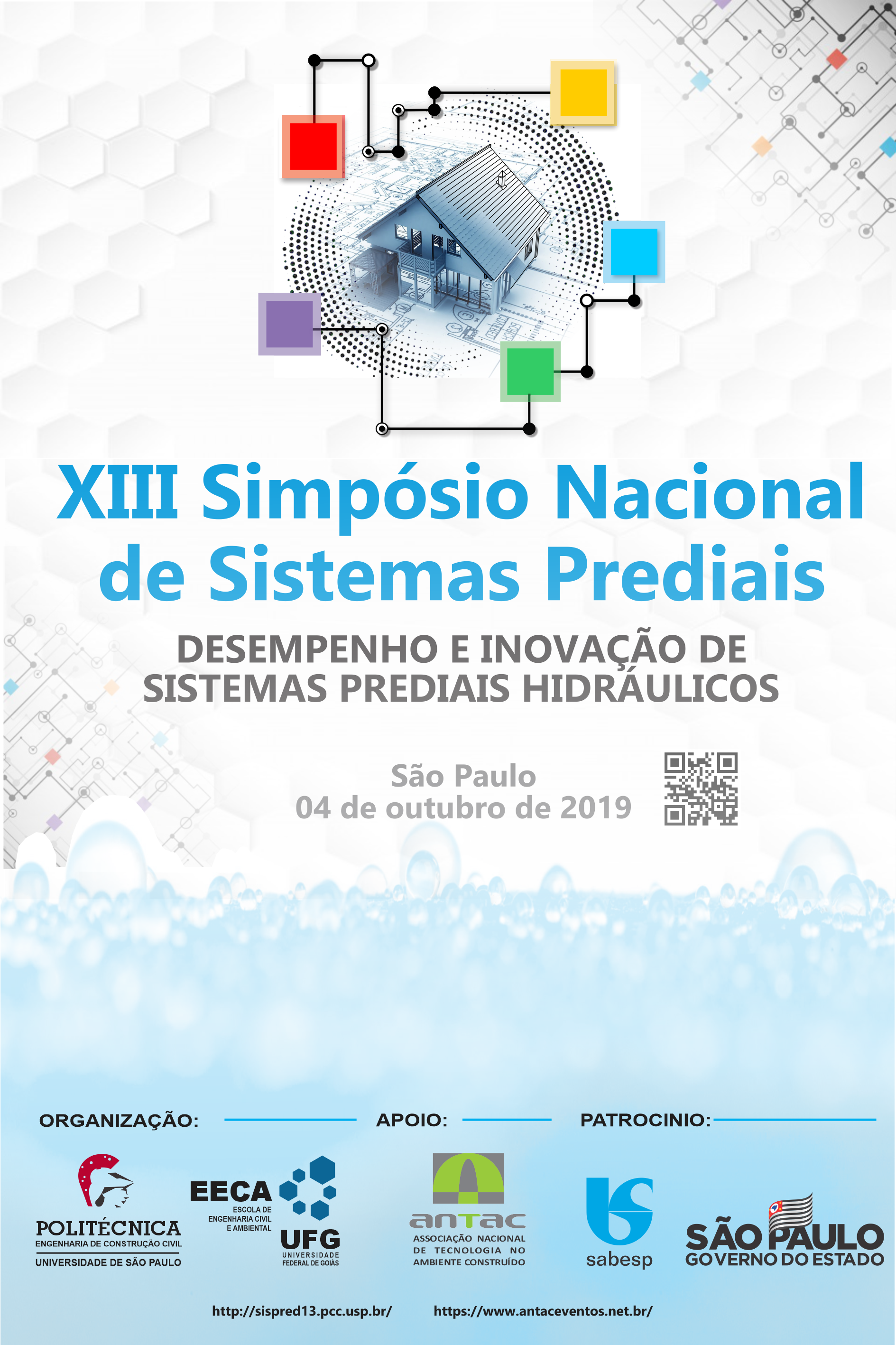Evaluation of the use of telemetry data acquisition meters to monitor water consumption at a bank branch in Joinville/SC
DOI:
https://doi.org/10.46421/sispred.v1i.1578Keywords:
Statistical Process Control, Water Consumption, Public buildings, R language, Plumbing systemsAbstract
ABSTRACT: The aim of this paper is to evaluate the use of a telemetry data acquisition hydrometer to monitor the water consumption of a bank branch in Joinville / SC, in order to detect excessive consumption and leakages. The measurement system trial lasted for 6 months, from November 2018 to April 2019. The sensor connected to the hydrometer registers readings every 15 minutes, resulting in a total of 2.880 automatic readings for every 30 days. The data is stored in a meter and synchronized in a cloud server, allowing easy access to the data anywhere. The statistical data analysis was executed using R software programming language. Programming scripts were developed for importing, formatting and analyzing the data. Statistical process control charts were used in the analysis section. The median daily consumption was 5.925 m³, standard deviation of 3.25 m³ and maximum consumption of 25.68 m³. The conclusion is that the water management system with a flow rate measurement system, combined with information technology tools proved to be an innovation that helps to identify overconsumption almost instantly. Automatic readings made it possible to elaborate control charts in short periods, thus allowing the detection of consumption anomalies and faster action to reduce the water misuse.
Downloads
References
BRITTON, T. C.; COLE, G.; STEWART, R. A.; WISKAR, D. Remote Diagnosis of Leakage in Residential Households. Water, n. September, p. 56–60, 2008.
FREITAS, L. L. G.; HENNING, E.; KALBUSCH, A.; KONRATH, A. C.; WALTER, O. M. F. C. Analysis of water consumption in toilets employing Shewhart, EWMA, and Shewhart-EWMA combined control charts. Journal of Cleaner Production, v. 233, p. 1146–1157, 2019.
IPCC. Summary for policymakers. In: FIELD, C.B., V.R. BARROS, D.J. DOKKEN, K. J. M.; M.D. MASTRANDREA, T.E. BILIR, M. CHATTERJEE, K.L. EBI, Y.O. ESTRADA, R.C. GENOVA, B. GIRMA, E.S. KISSEL, A. N.; LEVY, S. MACCRACKEN, P. R. M. E L. L. W. (Eds.). . Climate Change 2014: Impacts, Adaption, and Vulnerability.Part A: Global and Sectoral Aspects. Cambridge, UK and New York, USA: Cambridge University Press, 2014. p. 1–32 .
MAAMAR, Z.; BAKER, T.; FACI, N.; AL-KHAFAJIY, M.; UGLJANIN, E.; ATIF, Y.; SELLAMI, M. Weaving cognition into the internet-of-things: Application to water leaks. Cognitive Systems Research, v. 56, p. 233–245, ago. 2019.
MOHAMMED SHAHANAS, K.; BAGAVATHI SIVAKUMAR, P. Framework for a Smart Water Management System in the Context of Smart City Initiatives in India. Procedia Computer Science, v. 92, p. 142–147, 2016.
MONTGINOUL, M.; VESTIER, A. Smart metering: A water-saving solution? Consider communication strategies and user perceptions first. Evidence from a French case study. Environmental Modelling & Software, v. 104, p. 188–198, jun. 2018.
MONTGOMERY, D. C.; RUNGER, G. C. Estatística aplicada e probabilidade para engenheiros. Rio de Janeiro: LTC, 2013.
R CORE TEAM. R: A Language and Environment for Statistical Computing. R Foundation for Statistical Computing, Vienna, Austria, Disponível em: <https://www.r-project.org/>. Acesso em: 14 maio. 2019.
WELSH, A. Smarter water infrastructure. World Pumps, v. 2019, n. 1, p. 22–23, 1 jan. 2018.
YUANYUAN, W.; PING, L.; WENZE, S.; XINCHUN, Y. A New Framework on Regional Smart Water. Procedia Computer Science, v. 107, n. Icict, p. 122–128, 2017.

